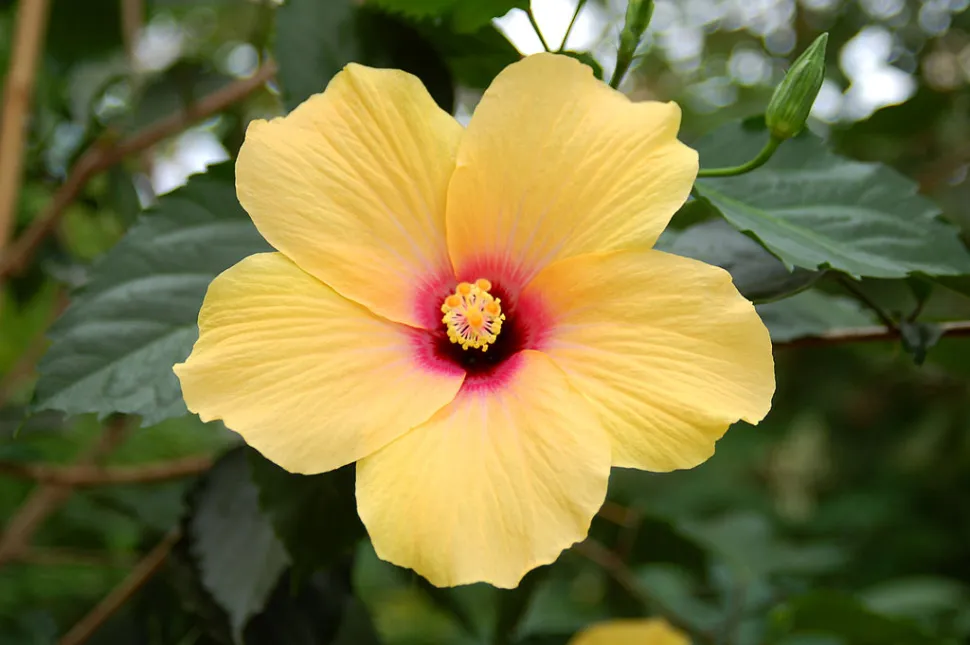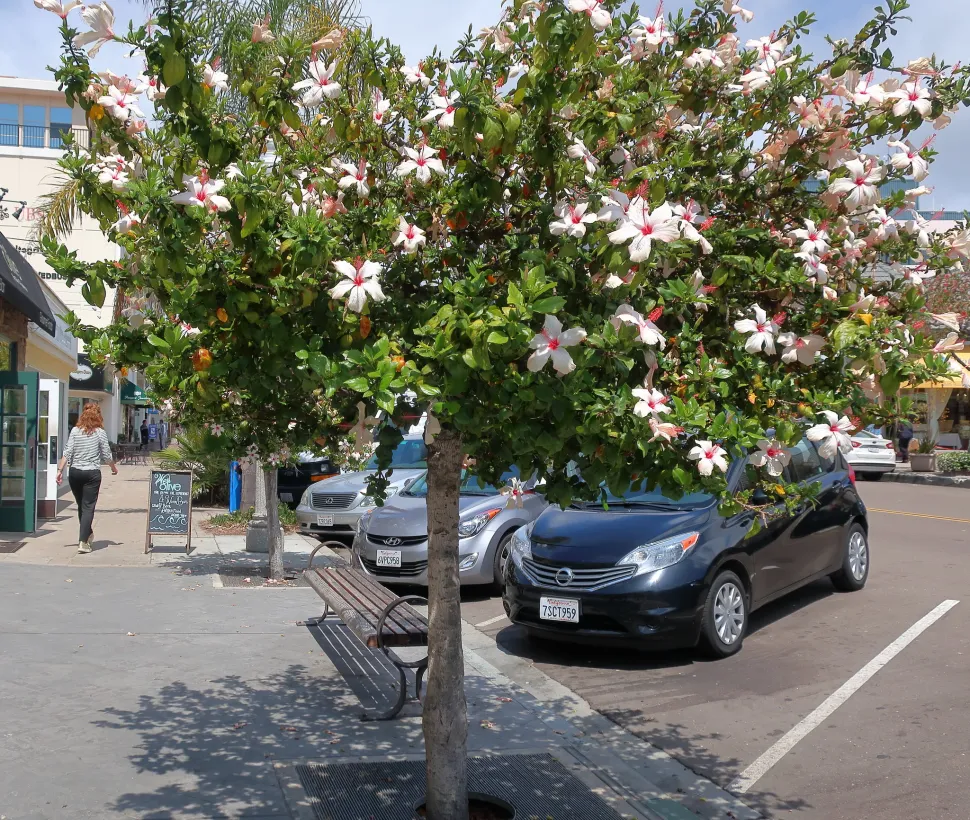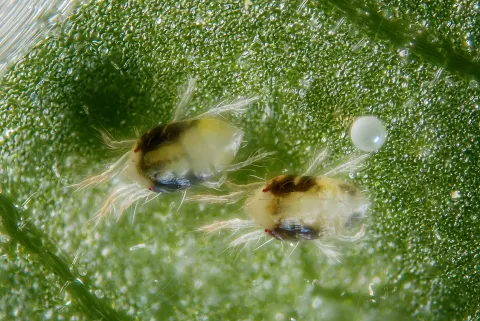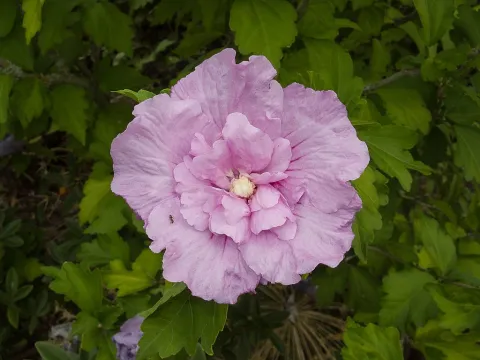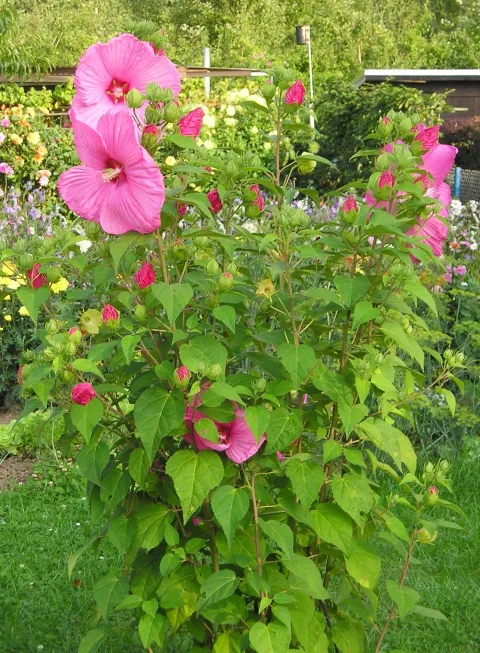Hibiscus rosa-sinensis, the indoor hibiscus
Emblematic of Hawaii and Malaysia, Hibiscus rosa-sinensis is thought to have originated in southeast China. In Europe, this member of the Malvaceae family is grown indoors for its abundant summer blooms.
How to recognize hibiscus rosa-sinensis, the Chinese Pink Hibiscus?
A highly branched shrub, Hibiscus rosa-sinensis reaches a height of seven meters in its natural environment. In pots and in our latitudes, it rarely exceeds three meters.
Unlike hibiscus syriacus and marsh Hibiscus, Hibiscus rosa-sinensis has semi-evergreen foliage. Its leaves fall off when it freezes. Oval or lanceolate, they are dark green. Their upper surface has a varnished appearance.
The Chinese Rose hibiscus blooms from March to November. Ephemeral flowers don't live more than a day or two. But every time one of them fades, a new bud bursts out, prolonging the bloom until early winter.
The trumpet-shaped flowers measure at least ten centimetres. In the botanical variety, they are composed of five shiny, rounded red petals. Golden stamens emerge from the center. The type species has given rise to hybrids and cultivars. Some have double flowers, others a pink or yellow corolla.
The dried flowers are replaced by the fruit, a brown, half-open capsule. It contains hairy seeds.
Hibiscus rosa-sinensis is non-toxic. The plant is used in traditional medicine to treat a wide range of ailments, from coughs and boils to digestive disorders. The flowers are also used in cooking. They are used in jams, herbal teas, sorbets and cakes.
Care for your Hibiscus rosa-sinensis
Hibiscus rosa-sinensis are gelatinous plants and are grown indoors. The secret to abundant flowering? Regular pruning and fertilization.
Watering
Hibiscus rosa-sinensis like to keep their substrate moist, but hate to have a soggy root ball. Water when the soil begins to dry on the surface.
Use non-calcareous water, such as rainwater, at room temperature.
Hibiscus rosa-sinensis need copious watering. Pour water until the excess runs off through the drainage holes.
Let your Chinese Rose Hibiscus drain for a few minutes, then put the plant back in its place. Remove any stagnant water from the saucer or planter. It may rot the roots.
Spray
In addition to regular watering, misting prevents the plant from drying out due to heat in summer and heating in winter.
Hibiscus rosa-sinensis do not like hard water. Preferrainwater or filtered water.
Hibiscus rosa-sinensis do not like hard water. Preferrainwater or filtered water.
Repotting
In spring, transfer your Hibiscus rosa-sinensis to a larger pot, so that it can continue to grow.
Hibiscus rosa-sinensis flowers best when the plant is cramped. For repotting, choose a terracotta pot two to five centimetres in diameter, larger and deeper than the previous one.
In a perforated pot, place a layer of clay balls or gravel to improve drainage. Add potting soil for flowering plants. You can also make your own mixture of heather soil and sand.
Remove any residual potting soil from the root ball of your Hibiscus rosa-sinensis. Plant in the center of the pot and press down.
To improve humidity, place the pierced pot on a bed of moist clay balls or pebbles.
Fertilization
You can stimulate the growth of your plant during its growth phase, in spring and summer, with fertilizer.
Feed your Chinese Rose Hibiscus with a special liquid fertilizer for flowering plants.
Prune
Using clean, sharp pruning shears, remove dry, dead branches.
Then shorten healthy branches just below the last bud. This encourages flowering and helps keep the plant compact.
If your plant becomes too imposing or bald, prune it severely. You can cut branches back, keeping two-thirds or half their length. Cut back five millimeters above an outward-pointing node to obtain a harmonious shape for regrowth.
Cutting
Take a healthy eight- to ten-centimeter branch, free of flower buds. Remove the leaves from the lower part and keep the upper pair.
You can dip the lower end in cuttings hormone to increase your chances of success.
Plant your graft in a bucket filled with potting soil. Bury your cutting deeply. At least two knots should be buried.
Cover with a transparent plastic bag or place your pot in a mini greenhouse.
Mist regularly to keep the substrate moist. Don't forget to aerate every day for a few minutes.
Exposures
Substrates
Diseases / Threats
Information
| Family | Malvaceae - Malvaceae |
| Type | Hibiscus - Hibiscus |
| Species | Chinese Rose Hibiscus - Hibiscus rosa-sinensis |
| Lifecycle | Perennial |
| Foliage | Semi-evergreen |
| Categories | |
| Tags |
Beginner Flowery Fritillary Edible flower |
| Origin |
East Asia |
| Hardiness (USDA) | 9b |
| Leaf color |
|
| Flower colors |
|
| Fruit color |
|
Discover plants from the same family

